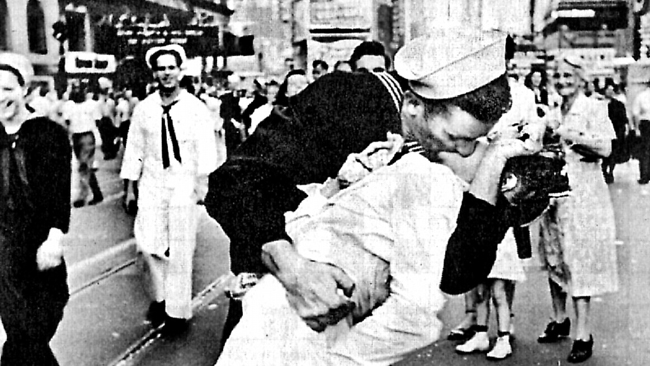In terms of actual content, The Turn of THIS Century is a fairly cursory, if well-researched tour through the major events that shaped nearly 100 years of human history, primarily those history-defining moments that occurred during the 20th century. And to be completely honest, it is a little dry and dusty. Its straightforward, serious, scholarly tone may remind you of that from a class lecture or a history museum presentation, which is not all that fun or enjoyable. To be fair, though, that’s not the film’s appeal or its real focus, nor should it be. The documentary feature employs hundreds of still images from LIFE Magazine – widely regarded as one of the preeminent magazines for news photography — to give its audience a better idea about, and view of, the events that are being discussed. For anyone who’s a fan of the magazine and photography, it’s must-see. History buffs, too, will enjoy seeing how the LIFE photographers were able to capture these moments in time with real artistry and in a truly timeless fashion. Admittedly, with a 50-minute running time, The Turn of THIS Century really stretches its description as a “feature.” But that does mean that the movie doesn’t overstay its welcome, or become too cumbersome with its observations. Peter Beyak (a documentarian and producer with a few Nature television credits) was able to use the LIFE archives and other photographic illustrations from Getty Images to creature a visual picture of a century’s worth of world history. Starting with early attempts at flight, as well as the events that sparked World War I and culminating with the election of Barack Obama and the marriage equality moment, the film looks at the wars, civil-rights movements, inventions and scientific research, evolutions in entertainment and some smaller moments that still resonate today. (By the way, the film’s Website and promotional materials make perfectly clear that LIFE did not actually produce the film nor did it necessarily endorse it. Rather, its participation in the film was limited strictly to providing the photographic images that were used in Beyak’s production.) Again, its narrative content isn’t all that special or revelatory, though it is fairly comprehensive and well-put-together. The photos themselves are the draw here, though a few go by so quickly that you may want to freeze-frame them to get a true appreciation. (Something that is possible, thanks to its Video-on-Demand release platform.) And Beyak is helped greatly by the effective score, which comes courtesy of international composer Robert Miles (The Bourne Identity, City of Bones). Reminiscent of the Philip Glass music for Godfrey Regio’s likeminded documentaries Koyaanisquatsi (1982), Powaqqatsi (1988) and Naqoyqatsi (2002), it helps propel the “action,” rather than dictate a tone or mood. Jeff Michael Vice can also be read reviewing comics and television for Big Shiny Robot! (www.bigshinyrobot.com), be heard reviewing films, television programs, comics, books, music and other things as part of The Geek Show Podcast (www.thegeekshowpodcast.com), and be seen reviewing films as part of Xfinity’s Big Movie Mouth-Off (www.facebook.com/BigMovieMouthOff).

